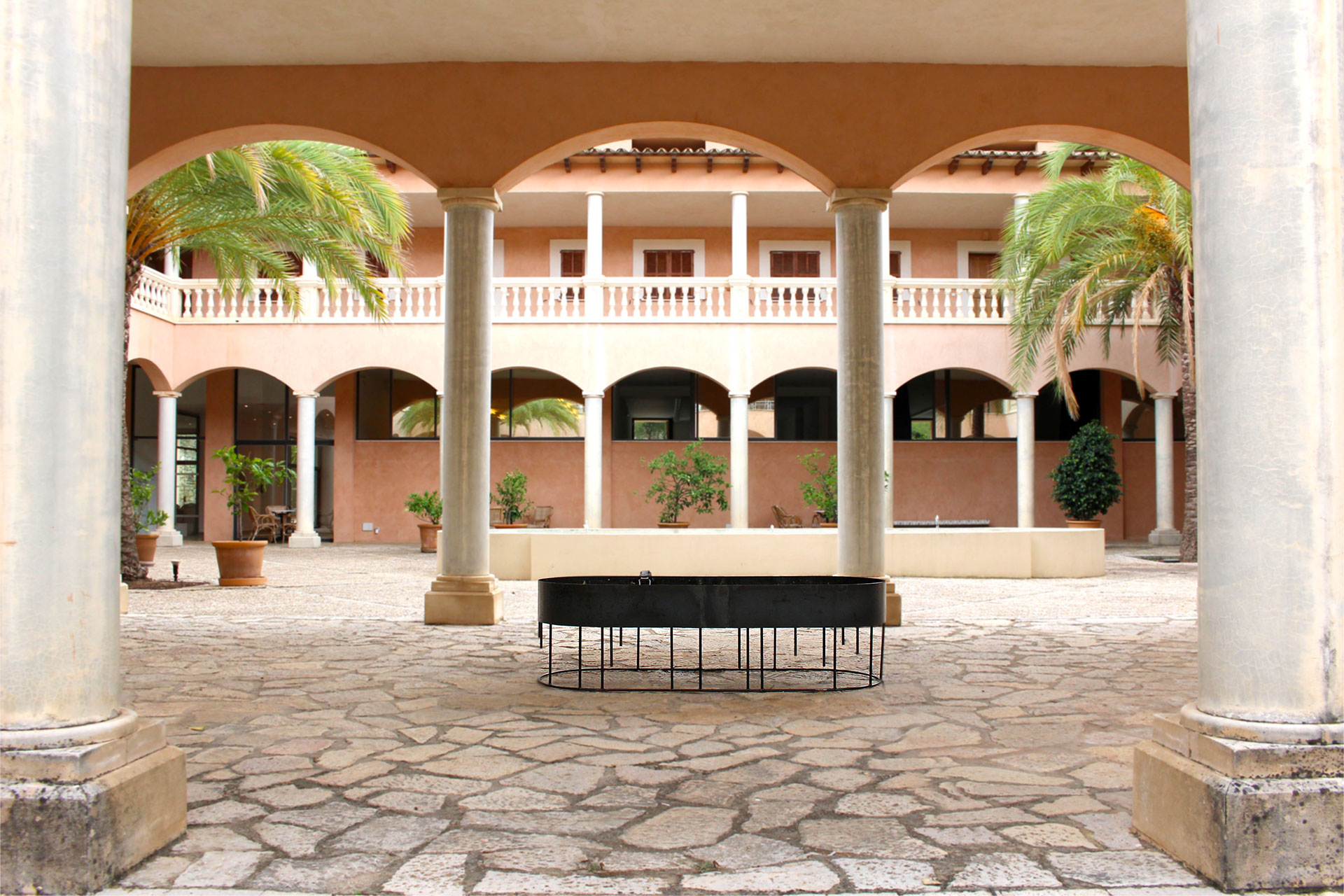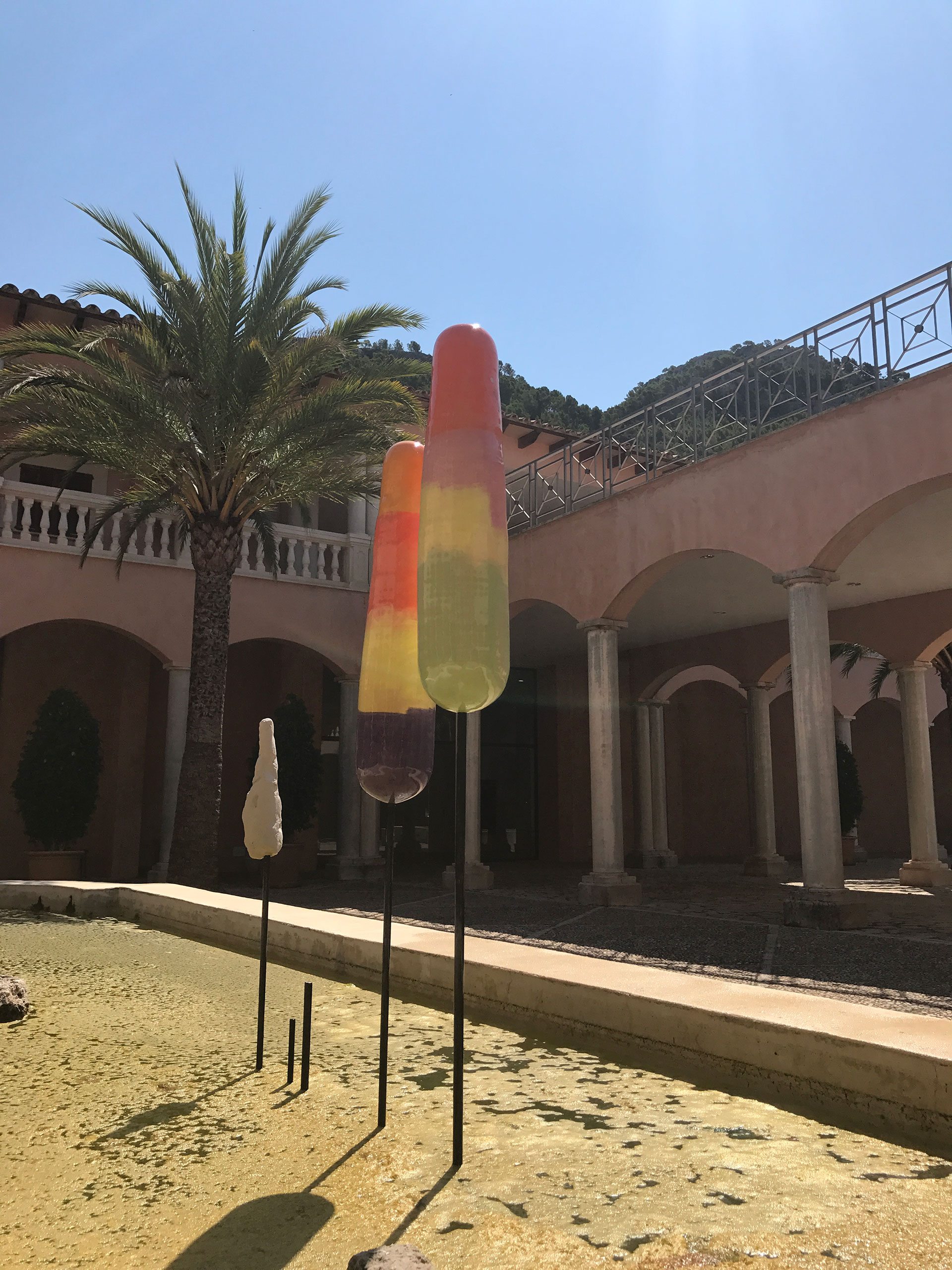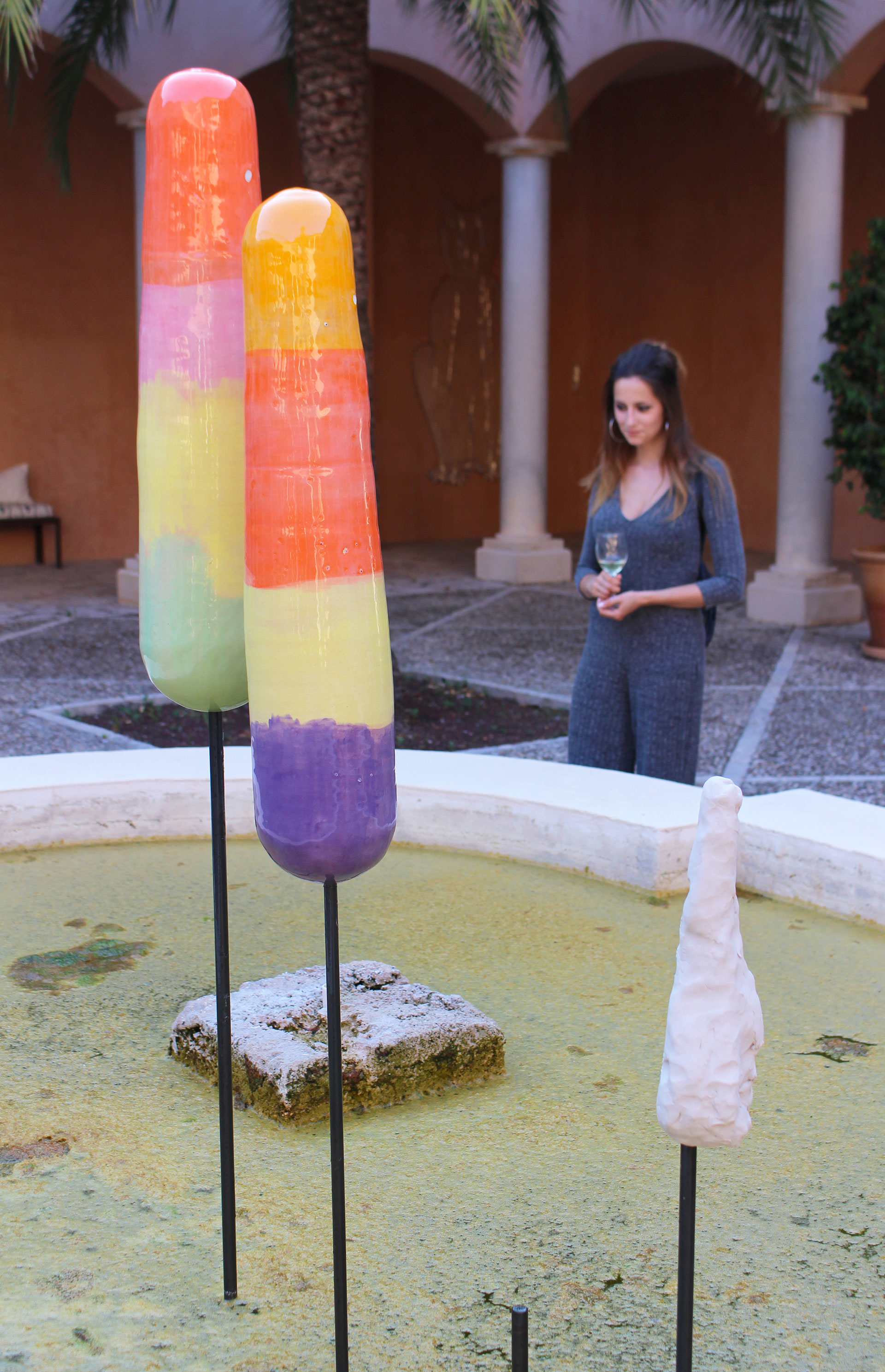Re-Sounding Organs
Giving shape and materializing what is invisible to the eye is an indispensable desire and a driving force in Mille Kalsmose’s work. With focussed attention, Kalsmose is exploring memory, identity, psychological mechanisms, and spiritual life conceptions in a manner wherein immaterial phenomena, emotional notions and suggestive concepts are rendered tangible. From a personal point of view, and often based on her own life experience, Kalsmose presents us with sculptural work that is in possession of a strong tactile appearance. Combining materials with opposing qualities, such as brass and paper or metal and silk, sets up a sensual tension reflecting the vulnerable and intense topics that are being raised. Ranging from images to sculptural pieces and installation works, there is a wide span to Kalsmose’s work, which, however is typically characterized by having an evocative nature. Recognizable elements that seem to resemble everyday objects are rendered abstract or twisted towards representing a more poetic or existential content. The introspective investigations are a continuous interest in Kalsmose’s work. Psychology, spirituality, and also science take part in these explorations of the inner life and our relation to our surroundings.
For her Re-sounding Organs exhibition, Kalsmose has included research about biological material (algae) and in-depth knowledge stemming from her collaboration with a neuroscientist and a sound healer, thus getting art and science to complement each other. Sound, organs, and algae are the three focal points of interest in the creation of the exhibition, Re-sounding Organs. Kalsmose has had a long-term interest in the qualities of sound, and the effect of sound on the body and mind. Sound is a profound phenomenon, with physical and metaphysical abilities. In Kalsmose’s work, the focus is on physical and spiritual sound and on how sound has a capacity to affect our organs through its vibrations that reach all the way to our mind and emotions. The organs are crucial to our existence; they are gatherings of tissue that help the body to function, and yet they are rarely visible. Kalsmose believes that emotions and inner life are of great importance to our well-being and if these are not nurtured and taken care of and protected, such neglect can have enormous physical impact on our organs. Kalsmose plays with the notion of giving form and visibility to our emotional and invisible organs.
The symbolic and actual importance of organs has inspired Kalsmose to not only research the concept, “organ”, by means of simulating organic capabilities, but also to give shape to the idea of a new organ. Algae is a distinctive biological material that provides oxygen to our planet. Kalsmose has incorporated algae in all three works, thus adding to her installations a living and multifaceted material, replete with its own uncontrolled life.
Re-sounding Organ is a 170 cm long black metal vessel filled with chunks of algae (the same length as the artist-body). Soft, green and floating, the algae appear as mysterious organic tissue – standing on several thin metal legs and generating a rhythmic composition that carries the vessel. From underneath the vessel, from two loudspeakers, a shamanistic sound floats through the basin, as the water and the algae generate small vibrations and patterns in the basin. This is human sound, a kind of chanting that gives rise to a spiritual and enigmatic aura around the vessel, accordingly generating a number of connotations and a sense of wonder about whether the vessel is supposed to represent a crib, a ritual instrument, a sarcophagus, or a baptismal basin. Each side of the basin is held together by a leather belt, strapping the basin: almost as if this black organ or the inside of it is supposed to be kept under control, while the strong chanting is repeatedly given voice by the vessel.
Dis-embodied Organ #1 and #2 are two separate pieces, but they are presented and incorporated into one site-specific work. These two pieces are placed in the big basin in the courtyard of CCA. Dis-embodied organ #1 consists of two elements that are standing on three legs. One element is bright red, smooth, and shiny, and shaped like a familiar organ. The other element is made of clay and has more of an amorphous shape, with distinct traces of human moulding that poses a contrast with the eloquent red entity. Depending on its surroundings, this shape will change according to how the clay responds to its surroundings. Dis-embodied organ #2 is also an installation that is standing on thin metal legs. It is an experiment with ceramics and nano paint. Kalsmose has been experimenting with colour combinations and colour as signifiers that give colour and visibility to psychological states and also function as a way of visualizing the sound-healer’s voice. Both pieces are immersed inside the big basin with algae and placed across one another, in the manner of a set-up of biologic renderings and mental moods.





